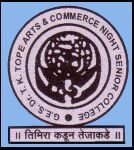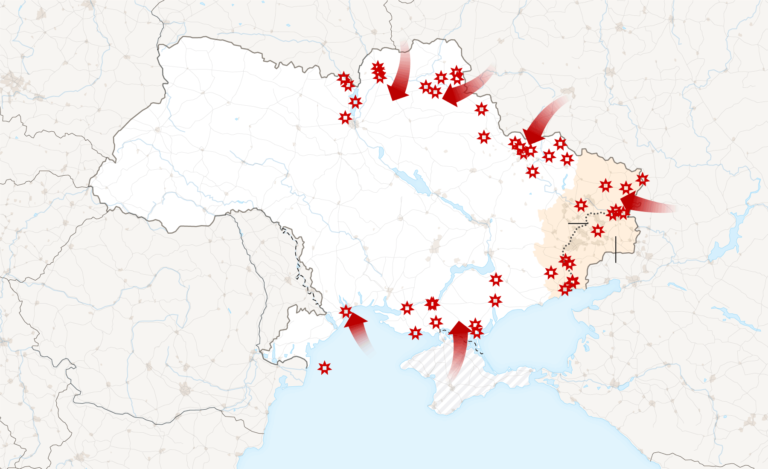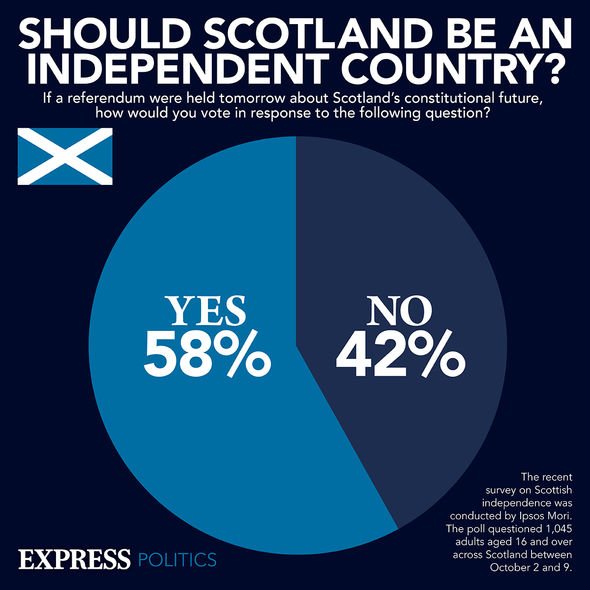TYBA Semester 6 Paper 4 India in world politics – summary
अनुक्रमणिका
परराष्ट्र धोरण
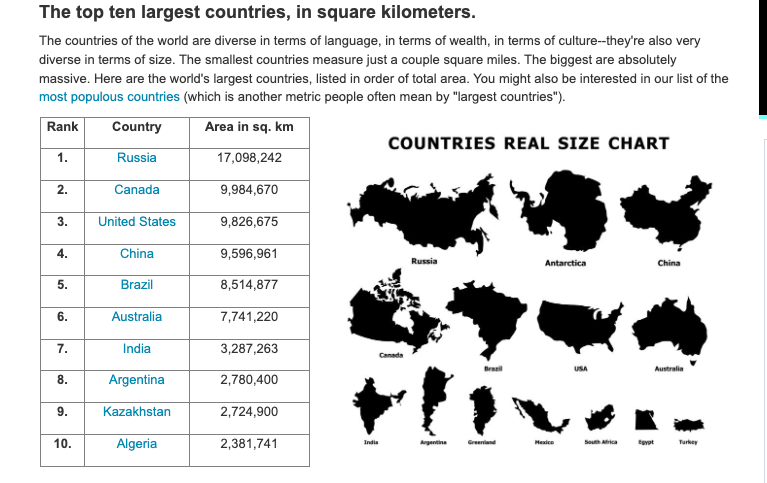
Feliks Gross फेलिक्स ग्रॉस – “विशिष्ट राज्याशी संबंध न ठेवण्याचा निर्णय देखील परराष्ट्र धोरण आहे”
परराष्ट्रधोरण – अर्थ आणि व्याख्या
जमीन, जल, वायु, अग्नी आणि आकाश या पंचमहाभूतांनी पृथ्वी बनली आहे असे म्हणतात. ती सगळीकडे सारखीच. पण ठिकठिकाणची भौगोलिक परिस्थिती आणि वातावरण वेगळे. प्राचीन काळापासून पृथ्वीच्या अनेक भागांमध्ये स्वतंत्रपणे वेगवेगळ्या मानवी संस्कृतींचा विकास झाला. संपर्क साधानांच्या अभावामुळे त्या सर्व संस्कृती सुरवातीला स्थानिकच राहील्या. संपर्क साधानांचा विकास झाला तसा त्यांचा एकमेकांशी संपर्क प्रस्थापित झाला. एकमेकांवर कुरघोडी, एकमेकांना ताब्यात घेणे, वर्चस्व प्रस्थापित करणे, व्यापार, सांस्कृतिक देवाण-घेवाण असे सर्व सुरु झाले. हौशी आणि धाडसी प्रवाशांनी जग शोधायला सुरवात केली. त्यामुळे आपापसातील संपर्क आणखी वाढला, आंतरखंडीय झाला. त्यानंतर काही महत्वाकांक्षी राजांनी साम्राज्ये स्थापन करायला सुरवात केली. साम्राज्यांच्या सीमा निश्चित होवू लागल्या, बदलू लागल्या. अनेक युद्धे झाली, अनेक संस्कृती उध्वस्त झाल्या, अनेक नव्याने उभ्या राहील्या, अनेकांना वेगळी दिशा मिळाली. राजकारणाने जग बदलून टाकले.
रोमन साम्राज्य, चर्चचे साम्राज्य, भारतातील मगध, मौर्य इत्यादी साम्राज्ये, इजिप्त मधील साम्राज्य, तुर्कांचे ओट्टोमान साम्राज्य, मुघल साम्राज्य, मराठा साम्राज्य, चीन आणि रशिया मधील साम्राज्ये जपानचे साम्राज्य – ही सर्व प्राचीन आणि मध्ययुगीन साम्राज्ये, यापैकी बरीच आधुनिक काळात अस्तित्वात होती, काही आजही आहेत, वास्तविक किंवा नामधारी स्वरुपात. साम्राज्यांमध्ये बल आणि हिंसेच्या आधारावर सत्ता चालत होती. माणसांच्या जीवाला किंमत नव्हती. राजांच्या लहरीवर सामान्यांचे जीवन आणि मरण अवलंबून होते. राजा म्हणेल ती पूर्व दिशा ही म्हण प्रचलित होती. सर्वत्र अशांतता आणि अस्थिरता होती. कल्याणकारी राज्य, हक्क, अधिकार या सर्वांचा मागमूसही नव्हता. एखादा राजा चांगला असेल तर संबंधीत जनतेला चांगले दिवस अनुभवता येत होते.
१६ व्या शतकात युरोपात राष्ट्र संकल्पनेचा जन्म झाला. १६४८ च्या वेस्टफॅलियाच्या कराराने राज्यांचे स्वतंत्र अस्तित्व मान्य केले गेले. एकमेकांच्या सीमांचे उल्लंघन करायचे नाही आणि दुसऱ्या राज्याच्या अंतर्गत बाबींमध्ये दखल द्यायची नाही हेही ठरले. समान धर्म, भाषा, संस्कृती, जीवनशैली, आर्थिक स्थिती, भौगोलिक सलगता यापैकी एका किंवा अनेक आधारांवर लोक एकत्र आले आणि राष्ट्रे स्थापन झाली. युरोपात मुख्यतः भाषेच्या आणि धर्म आणि वंशाच्या आधारावर इंग्लड, फ्रान्स, जर्मनी, इटली, पोर्तुगाल, स्पेन, स्वीडन, डेन्मार्क इत्यादी राष्ट्रांची स्थापना झाली. पुढच्या टप्प्यावर मुख्यतः युरोपातील राष्ट्रांनी जगभर आपली साम्राज्ये स्थापन करण्यास सुरवात केली. १९ व्या आणि विसाव्या शतकात या साम्राज्याविरुद्ध लढे उभे राहीले आणि त्यांना यश येवून आशिया, आफ्रिका आणि दक्षिण अमेरिकेत नवी राष्ट्रे उदयास आली. मार्च १९९० मध्ये नामिबिया आणि अगदी जुलै २०११ साली स्थापन झालेले दक्षिण सुदान ही आफ्रिका खंडातील राष्ट्रे ही अगदी अलिकडची उदाहरणे आहेत. १९४५ मध्ये ५१ राष्ट्रांनी स्थापन केलेल्या संयुक्त राष्ट्र संघटनेत आज १९३ सदस्य राष्ट्रे आहेत.
आजचे आपले राजकीय जग म्हणजे राष्ट्रांचा समूह आहे. सौदी अरेबिया, ब्रुनेई, संयुक्त अरब अमिराती आणि काही मोजक्या देशांमध्ये आजही राजाच्या हाती सर्व सत्ता आहे. परंतु हे देश वगळता बाकी सर्व राजांची किंवा सम्राटांची राज्ये नष्ट किंवा नामधारी होऊन त्यांची जागा राष्ट्रराज्यांनी घेतली आहे. राष्ट्रराज्ये ही आजच्या जागतिक व्यवस्थेचे प्रमुख घटक आहेत. त्यामुळेच या व्यवस्थेला आंतरराष्ट्रीय व्यवस्था (International system) असे म्हणतात. आज जगाची विभागणी राष्ट्रांच्या आधारे झाली आहे. सार्वभौम राष्ट्रराज्ये स्थापन झालेली आहेत. काही ठिकाणी स्वातंत्र्य आणि सार्वभौमत्व प्राप्तीसाठीचा हा संघर्ष अजून चालू आहे. उदा. सिरिया, इराक, इराण, तुर्कस्तान या देशांच्या काही भागात पसरलेल्या कूर्द जमातीच्या लोकांना आपले स्वतंत्र कूर्द राष्ट्र हवे आहे. सर्बीयाचा भाग असलेल्या कोसोवोने स्वातंत्र्य घोषित केले आहे. पण सर्बीयाची त्याला मान्यता नाही आणि आंतरराष्ट्रीय समुदायातील बऱ्याच राष्ट्रांनी त्याला मान्यता दिलेली नाही. संयुक्त राष्ट्रांचे सदस्यत्व त्याला मिळालेले नाही.
राष्ट्र हा आजच्या राजकीय जगाचा प्रमुख घटक आहे. ‘पर’ म्हणजे जे आपले नाही ते – परराष्ट्र म्हणजे आपले राष्ट्र सोडून इतर सर्व राष्ट्रे. जगात सध्या १९७ सार्वभौम राष्ट्रे आहेत असे गृहीत धरले तर प्रत्येक राष्ट्रासाठी १९६ राष्ट्रे ही ‘परराष्ट्रे’ आहेत. ह्या परराष्ट्रांशी किंवा ह्यापैकी कोणत्या राष्ट्रांशी कशा प्रकारचे संबंध ठेवायचे, किंवा ठेवायचे नाहीत त्यासंबंधीचे प्रत्येक राष्ट्राचे धोरण म्हणजे परराष्ट्र धोरण. इतिहास, भूगोल, समाजकारण, राजकारण, अर्थकारण, साहित्य, कला, शास्त्र आणि तंत्रज्ञान, तत्त्वज्ञान, विचारप्रणाली अशा सर्व घटकांचा प्रभाव परराष्ट्र धोरणावर पडतो. प्रत्येक राष्ट्राचे स्वतंत्र परराष्ट्र धोरण असते. अर्थात ते कितपत स्वतंत्र असते त्याची चर्चा आपण नंतर करु. प्रत्येक राष्ट्राचे सर्व १९६ राष्ट्रांशी संबंध असतीलच असे नाही. सीमेला लागून असलेली शेजारी राष्ट्रे परराष्ट्र धोरणाच्या संदर्भात सर्वात महत्त्वाची असतात. ती तुमच्यावर थेट हल्ला करु शकतात. त्यानंतर येतात ती विभागातील प्रभावी राष्ट्रे आणि त्यानंतर जगभरातील प्रभावी राष्ट्रे आणि महासत्ता.
प्रत्येक राष्ट्राचे सरकार आपले परराष्ट्र धोरण ठरवते. हे धोरण अर्थातच राष्ट्र हितावर आधारित असते. कोणत्याही राष्ट्राशी संबंध ठेवताना किंवा वाढवताना या संबंधांमधून आपल्याला काय फायदा होईल याचा विचार प्रथम केला जातो. राष्ट्रे एकमेकांशी कोणताही संबंध न ठेवता राहू शकत नाहीत. प्रत्येक राष्ट्राचे इतर अनेक राष्ट्रांशी चांगले, वाईट संबंध असतात. मित्र किंवा शेजारी राष्ट्रे आंतरराष्ट्रीय संघटना बांधतात. संयुक्त राष्ट्रांसारख्या जागतिक पातळीवरच्या संस्था कार्यरत आहेत. परराष्ट्र धोरणामध्ये या सर्व संस्थांचा आणि संघटनांचाही विचार केला जातो. पर्यावरण संरक्षणासारखे, राष्ट्रांच्या सीमांच्या पलिकडे जाऊन, सर्व जगाला भेडसावणारे प्रश्न असतात. त्यांचाही विचार परराष्ट्र धोरणात केला जातो.
भारताचे पहिले पंतप्रधान पंडीत जवाहरलाल नेहरू हे भारताच्या परराष्ट्र धोरणाचे शिल्पकार आहेत. आज भारताकडे एक उदयोन्मुख सत्ता (emerging power) म्हणून पाहिले जाते. १९२५ साली त्यांनी काँग्रेस अंतर्गत एक परराष्ट्र विभाग सुरु केला होता.
परराष्ट्र धोरणावर अंतर्गत आणि बाह्य अशा दोन्ही घटकांचा प्रभाव पडतो. भूगोल, इतिहास, आर्थिक स्थिती, शिक्षणाचा दर्जा, आरोग्य हे अंतर्गत घटक झाले तर आंतरराष्ट्रीय परिस्थिती, शत्रुचे लष्करी सामर्थ्य, महासत्तांचा प्रभाव हे बाह्य घटक आहेत.
दक्षिण आफ्रिकेतील वर्णद्वेशी राजवटीमुळे भारताने काही काळ त्या देशावर बहिष्कार टाकला होता. नेल्सन मंडेला यांचे आंदोनल यशस्वी झाल्यानंतर तिथे सत्ता बदल झाला. फेब्रुवारी १९९० मध्ये त्यांच्या दीर्घ कारावासातून सुटका झाली, ते आफ्रिकन नॅशनल काँग्रेसच्या राजकारणात सक्रिय सहभाग घेऊ लागले, यशस्वी झाले. बहुसंख्य कृष्णवर्णीयांच्या हाती सत्ता आली. दक्षिण आफ्रिकेची घटना बदलली गेली. वर्णद्वेषाचे धोरण रद्द करण्यात आले, समानता प्रस्थापित झाली. त्यानंतर भारताने हा बहिष्कार मागे घेतला.
राजनय – परराष्ट्र धोरणाची अंमलबजावणी करण्याचे प्रमुख साधन
पारंपारिक किंवा जुना राजनय हा गुप्त राजनय होता. केवळ राजा किंवा इतर कोणत्याही प्रकारचा सत्ताधीश आणि त्याच्या जवळच्या गटातील माणसांपुरते हे व्यवहार मर्यादीत होते. जनतेला त्याबद्दल काहीच माहिती नसायची. जनतेला फक्त युद्ध आणि संघर्षाच्या स्वरुपात त्याचे परिणाम भोगावे लागत होते. अजूनही राजनयामधील गुप्तता कायम आहे – काही वेळा काही राष्ट्रांना काही ठिकाणी किंवा काही बाबतीत माघार घेणे जरुरीचे आहे हे समजते परंतु स्वतःची प्रतिमा राखण्याच्या दृष्टीने ते जाहीर करायचे नसते – त्यामुळे गुप्तता राखली जाते. असे असले तरी पूर्वीच्या तुलनेत अलिकडे राजनय बऱ्याच मोठ्या प्रमाणावर खुला झाला आहे.
The chief purpose of diplomacy is to enable states to achieve objectives of their foreign policies without resort to force राजनयाचा मुख्य उद्देश राज्यांना सक्तीचा अवलंब न करता त्यांच्या परराष्ट्र धोरणांची उद्दिष्टे साध्य करण्यास सक्षम करणे हा आहे.
राजनयावरील जागतिकीकरणाचा परिणाम
वुड्रो विल्सन हे अमेरिकेचे उदारमतवादी राष्ट्राध्यक्ष – यांनी विशेषतः पहिल्या महायुद्धातील वाईट अनुभवा पाहिल्यानंतर खुल्या राजनयाचा पुरस्कार केला.
अलिप्ततावाद
अलिप्ततावाद हे भारताच्या परराष्ट्र धोरणाचे प्रमुख वैशिष्ट्य आहे. अलिप्ततावाद म्हणजे कोणत्याही राष्ट्रांच्या लष्करी गटात सामील न होणे. भारत स्वतंत्र झाला तेव्हा भारतासमोर आंतरराष्ट्रीय राजकारणाच्या संदर्भातील दोन पर्याय उपलब्ध होते – एकतर अमेरिकेच्या गटात सामील होणे किंवा सोव्हिएट युनियनच्या गटात सामील होणे. दोन्ही राष्ट्रांमध्ये जे शीतयुद्ध चालू होते त्यामध्ये अमेरिकेचा मुख्य हेतू साम्यवादाचा प्रसार रोखणे हा होता तर रशियाला भांडवलवादाला विरोध करून साम्यवादाचा प्रसार करायचा होता. त्यासाठी अमेरिकेने आर्थिक आघाडीवरही जोरदार तयारी केली होती. अमेरिकेतील ब्रेटनवुड्स येथे अमेरिकेच्या मित्र राष्ट्रांची (भांडवलवादी व्यवस्था स्विकारलेल्या राष्ट्रांची) आंतरराष्ट्रीय परिषद भरवण्यात आली होती. यामध्ये अमेरिकेच्या आधी जवळपास दोन शतके जगावर साम्राज्य गाजवणाऱ्या ब्रिटनचाही अर्थात पुढाकार होता. त्यामध्ये झालेल्या चर्चेच्या आधारावर नंतर जागतिक बँक, आंतरराष्ट्रीय नाणे निधी या संस्था स्थापन करण्यात आल्या. यांच्या मदतीने अमेरिकेने गेली कित्येक वर्षे जागतिक अर्थव्यवस्था आपल्या ताब्यात ठेवली आहे. अतिरेकी भांडवलवाद आणि साम्यवाद या दोन्ही घातक विचारप्रणाली आहेत, भारताच्या दृष्टीने योग्य नाहीत हे पंतप्रधान नेहरूंचे स्पष्ट मत होते. भारताने दोन्ही गटांमध्ये सामील न होता अलिप्त राहण्याच्या मार्ग निवडला. परंतु अलिप्त म्हणजे तटस्थ नव्हे. भारताने महत्त्वाच्या जागतिक घडमोडींसंबंधी नेहमीच आपल्या प्रतिक्रिया दिल्या आहेत, त्यामध्ये काहीवेळा अमेरिका आणि सोव्हिएट युनियनवर केलेल्या टीकेचाही समावेश आहे. अलिप्तता किंवा non-alignment ही संज्ञा पंतप्रधान पंडीत जवाहरलाल नेहरूंनी मांडली.
The Non-Aligned Movement was founded and held its first conference (the Belgrade Conference) in 1961 under the leadership of Josip Broz Tito of Yugoslavia, Gamal Abdel Nasser of Egypt, Jawaharlal Nehru of India, Kwame Nkrumah of Ghana, and Sukarno of Indonesia.
Britannica article
सध्या अलिप्ततावादी चळवळीचे १२० सदस्य देश आहेत. परंतु एक संघटना म्हणून ती जागतिक राजकारणात फारशी प्रभावी नाही.

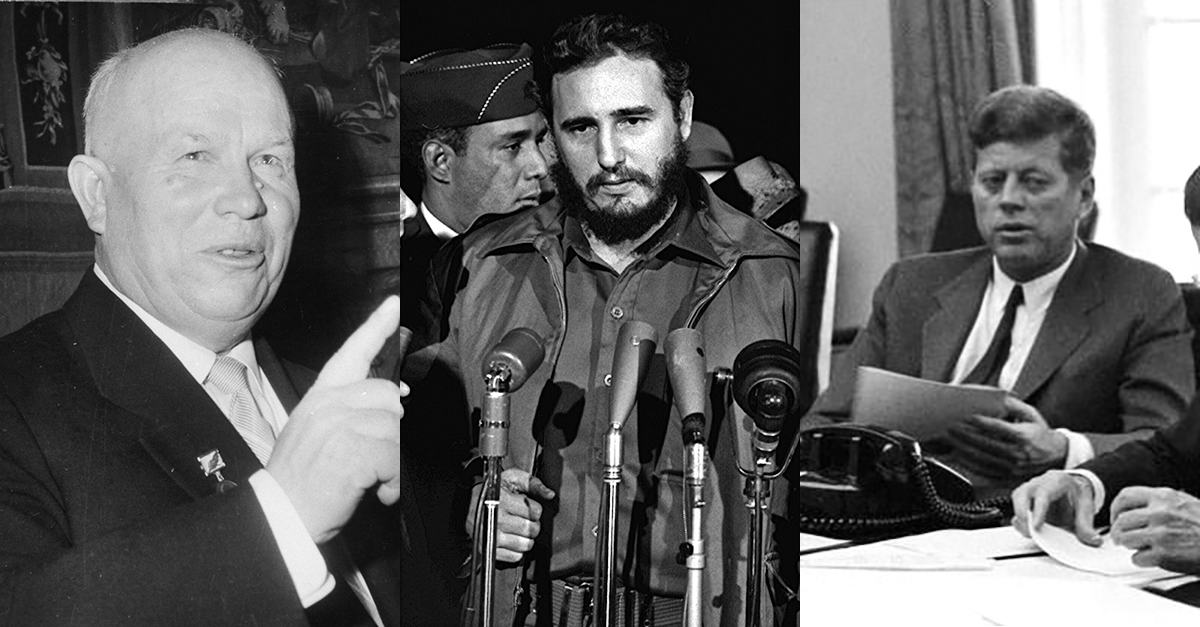
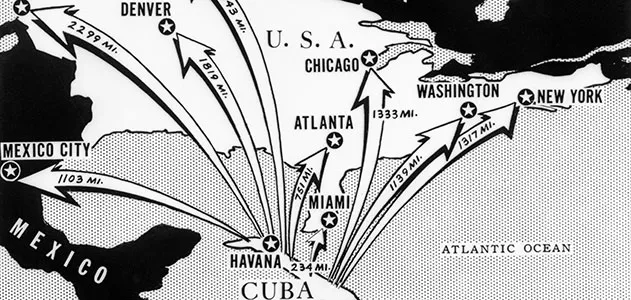
भारत आणि अमेरिका

१९५१ पासून अमेरिका भारताला अन्नधान्याची मदत करते आहे. राष्ट्राध्यक्ष हॅरी ट्रुमन यांच्या काळात India emergency food assistance act संमत झाला.
The United States has invested in India’s development since President Harry Truman’s signed the India Emergency Food Assistance Act in 1951. USAID’s program has evolved progressively over the decades from emergency provision of food, to infrastructure development, capacity building of key Indian institutions, support for the opening of the Indian economy and more.
U.S. economic assistance has followed a similar trajectory. In 1960, food aid accounted for 92 percent of the annual assistance budget. In the late 1970s, projects included rural electrification, fertilizer promotion, malaria control, agricultural credit, integrated health and population programs, irrigation schemes and social forestry.
By the mid-1980’s, the program shifted to focus on science and technology with an emphasis on policy and institutional reforms. Programs addressed agricultural research, alternative-energy technology development, biomedical research, water resources management and family planning. Technology transfer and institution capacity building were integral to these activities.
From 1992 to 2002, approximately 65 percent of the annual U.S. foreign assistance funding for India was dedicated to food aid. The sixty-year-old India food aid program ended in 2011, and the 2012 budget request has no food aid.
USAID has played an important role in India, including:
- Establishing eight agricultural universities with world-class agricultural research capacity;
- Establishing the first Indian Institute of Technology and 14 regional engineering colleges;
- Supporting capital market development to improve administration and price transparency on the stock exchanges;
- Launching the first municipal bond in the region for water supply and sanitation infrastructure development;
- Launching the “green building” movement in India — catalyzing over 1.2 billion square feet of LEED-registered green building space in the country; and
- Strengthening India’s national programs on immunization, family planning, maternal and child health, HIV/AIDS, tuberculosis and polio.
Last updated: April 11, 2022 – https://www.usaid.gov/india/history
भारत-चीन संघर्षाच्या दरम्यान भारत अमेरिका संबंध अधिक मैत्रीपूर्ण झाले. त्याकाळात राष्ट्राध्यक्ष केनडी यांनी भारताच्या बाजूने भूमिका घेऊन चीनला धमकी दिली होती.

India US civil nuclear deal 2005. – 123 agreement – १२३ करार
एन. पी. टी. व सी. टी. बी. टी. हा भारत व अमेरिकेतील वादाचा मुद्दा राहिलेला आहे.
भारत आणि रशिया

Warsaw Pact, formally Warsaw Treaty of Friendship, Cooperation, and Mutual Assistance, (May 14, 1955–July 1, 1991) treaty establishing a mutual-defense organization (Warsaw Treaty Organization) composed originally of the Soviet Union and Albania, Bulgaria, Czechoslovakia, East Germany, Hungary, Poland, and Romania. (Albania withdrew in 1968, and East Germany did so in 1990.) The treaty (which was renewed on April 26, 1985) provided for a unified military command and for the maintenance of Soviet military units on the territories of the other participating states.
The immediate occasion for the Warsaw Pact was the Paris agreement among the Western powers admitting West Germany to the North Atlantic Treaty Organization. The Warsaw Pact was, however, the first step in a more systematic plan to strengthen the Soviet hold over its satellites, a program undertaken by the Soviet leaders Nikita Khrushchev and Nikolay Bulganin after their assumption of power early in 1955. The treaty also served as a lever to enhance the bargaining position of the Soviet Union in international diplomacy, an inference that may be drawn by the concluding article of the treaty, which stipulated that the Warsaw agreement would lapse when a general East-West collective-security pact should come into force.
Britannica, The Editors of Encyclopaedia. “Warsaw Pact”. Encyclopedia Britannica, 7 May. 2021, https://www.britannica.com/event/Warsaw-Pact Accessed 14 April 2022.
सर्वच बाबतीत रशिया हे राष्ट्र सोव्हिएट युनियनचे उत्तराधिकारी मानले जाते. त्यामुळेच त्याला संयुक्त राष्ट्रांच्या सुरक्षा परिषदेतील कायम सदस्यत्व मिळाले आहे.
भारत आणि रशिया आणि पूर्वाश्रमीचा USSR (Union of Soviet Socialist Republics) म्हणजेच सोव्हिएट युनियन यांच्या मधील व्यापार मुख्यतः रशियन रुबल-भारतीय रुपया च्या माध्यमातून होत होता. १९७१ मध्ये २० वर्षांसाठीचा भारत रशिया मैत्री करार करण्यात आला. १९९१ मध्ये योगायोगाने सोव्हिएट रशियाचे विघटन झाले आणि त्याचे रुपांतर १५ स्वतंत्र गणराज्यांमध्ये झाले. १९९१ ते २००० पर्यंत येल्तसिन यांचे सरकार होते. येल्तसिन अमेरिकेच्या बाजूने विचार करणारे होते.
1975 साली रशियाच्या उपग्रह प्रक्षेपण स्थळावरून भारताच्या आर्यभट्ट या पहिल्या स्वदेशी बनावटीच्या उपग्रहाचे प्रक्षेपण करण्यात आले.
भारत आणि रशिया मिळून ब्राह्मोस हे सुपरसॉनिक क्रुझ मिसाईल विकसित करीत आहेत.
The rupee-rouble mechanism had existed in the Soviet era and was designed to bypass the US dollar owing to tensions between Washington and Moscow, which date back decades. Under this system, India paid in rupees for the items it purchased from Russia, equivalent to the value of the product in roubles.
The rupee-rouble mechanism also worked in the form of the traditional barter system, under which Russia could import items from India worth the same value that New Delhi would procure from Moscow.
“The mechanism is being studied… There is no clarity on the sanctions yet. This is too early to conclude anything,” said a source involved in studying the issue. “A rupee-rouble mechanism does not seem viable at this point of time because of currency fluctuations. No decision has been taken.”
https://theprint.in/diplomacy/rupee-rouble-romance-was-for-soviet-era-not-trade-option-now-for-india-russia/877837/
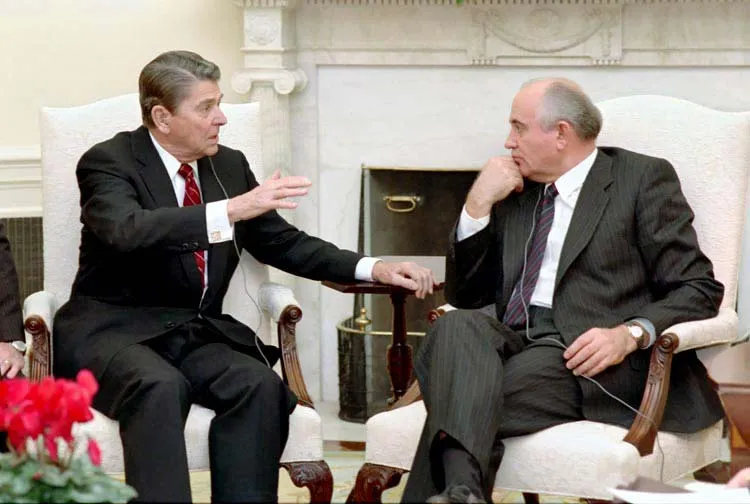
‘Druzhba-Dosti: A Vision for strengthening the Indian-Russian Partnership over the next decade’ – Joint Statement during the visit of President of the Russian Federation to India
The President of the Russian Federation, H.E. Mr. Vladimir V. Putin, paid an official visit to India on December 11, 2014 at the invitation of the Prime Minister of the Republic of India, H.E. Mr. Narendra Modi, for the 15th Annual Summit between the two countries. During the Summit, the leaders agreed on a vision for strengthening the India-Russia partnership over the next decade. Recognizing that the special and privileged strategic partnership between India and Russia has been built on the strong foundation of mutual trust, bilateral understanding and unique people-to-people affinities, the leaders emphasized that the time has come for a significant broad-basing of bilateral cooperation to carry the friendship between the countries to a qualitatively new level.
“‘Druzhba-Dosti: A Vision for strengthening the Indian-Russian ….” 11 Dec. 2014, https://mea.gov.in/bilateral-documents.htm?dtl/24486/druzhbadosti+a+vision+for+strengthening+the+indianrussian+partnership+over+the+next+decade++joint+statement+during+the+visit+of+president+of+the+russian+federation+to+india. Accessed 14 Apr. 2022.
भारत आणि चीन
पंचशील करार – 1954 – पंतप्रधान जवाहरलाल नेहरू आणि चीनचे पंतप्रधान झौ एन लाय यांच्या दरम्यान चीनमध्ये झाला.
भारत आणि चीन यांच्यामधील सीमावाद गंभीर आहे. या सीमेला मॅकमोहन रेषा असेही म्हटले जाते. लडाख, हिमाचल प्रदेश, उत्तराखंड, सिक्कीम, अरुणाचल प्रदेश, या राज्यांशी चीनची जवळपास ३४८८ किमी सीमा भिडलेली आहे. १९६२ मध्ये चीनने भारतावर आक्रमण केले. तो भारतासाठी आणि विशेषतः “हिंदी चीनी भाई भाई” चा नारा देणाऱ्या पंतप्रधान जवाहरलाल नेहरू यांच्यासाठी आणि त्यांच्या एकूणच चीन संबंधीच्या धोरणाला बसलेला एक मोठा धक्का होता.
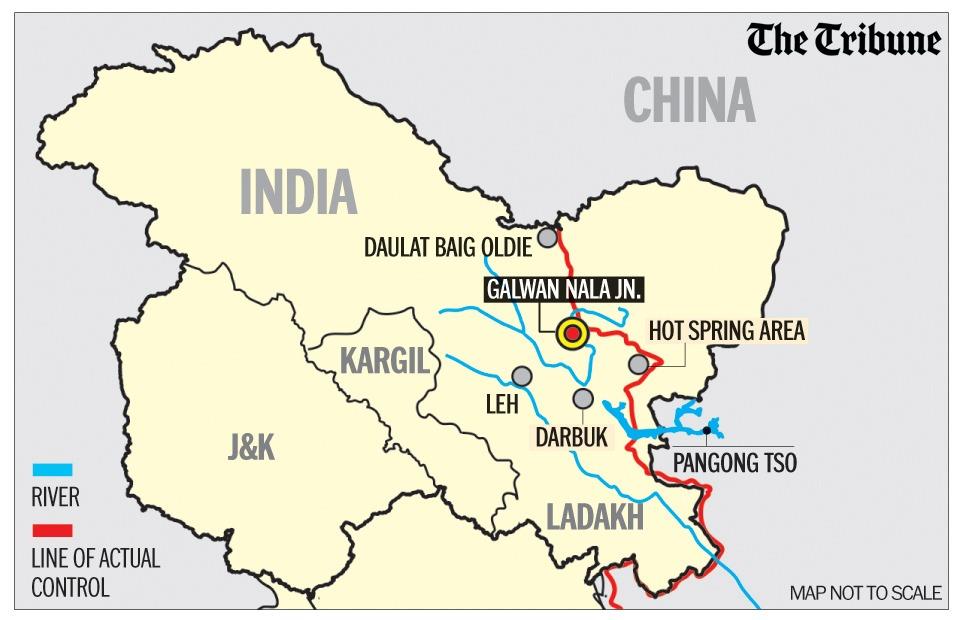
डोकलामचा प्रश्न
Doklam, or Donglang in Chinese, is an area spread over less than a 100 sq km comprising a plateau and a valley at the trijunction between India, Bhutan and China. It is surrounded by the Chumbi Valley of Tibet, Bhutan’s Ha Valley and Sikkim.
Despite several rounds of engagement between China and Bhutan, the dispute between the two over Doklam has not been resolved. It flared up in 2017 when the Chinese were trying to construct a road in the area, and Indian troops, in aid of their Bhutanese counterparts, objected to it, resulting in the stand-off. Doklam is strategically located close to the Siliguri Corridor, which connects mainland India with its north-eastern region. The corridor, also called Chicken’s Neck, is a vulnerable point for India.
Why does it matter?
While India-Tibet trade flourished along the Siliguri corridor and Chumbi Valley, Doklam had very little significance. Even during British rule, Doklam did not command much attention. In recent years however, China has been beefing up its military presence in the Chumbi Valley, where the Chinese are at a great disadvantage militarily. Both Indian and Bhutanese troops are on a higher ground around the Valley.
This is also the reason, the Indian security establishment suspect, why the Chinese have a deep interest in Doklam, which would give them a commanding view of and an easy access to both the Chumbi Valley and the Siliguri Corridor. The desolate Doklam region grabbed global attention after the stand-off. According to Indian claims, it began on June 16, 2017, when Chinese troops came to the area with equipment to extend a road southward in Doklam, towards the Bhutanese Army camp near the Jampheri Ridge, which according to both Bhutan and India are an integral part of Bhutanese territory. China says the ridge is the border. Two days later, a few hundred Indian troops entered Doklam, at the request of Bhutan, and stopped the construction.
The Bhutanese government told China that “the construction of the road inside Bhutanese territory is a direct violation of the agreements and affects the process of demarcating the boundary between our two countries.” On June 30, the Ministry of External Affairs said: “Such construction would represent a significant change of status quo with serious security implications for India.”
The Chinese government released a map to accuse India of trespassing into its territory, and in a detailed statement in the first week of August, it said “India has no right to interfere in or impede the boundary talks between China and Bhutan.”
What next?
India and China have one of the world’s longest disputed borders and areas — which include 37,000 sq km of uninhabited Aksai Chin and Arunachal Pradesh with 1.4 million residents and over 84,000 sq km.
Despite several rounds of negotiations between Special Representatives, the dispute is nowhere near a solution.
Meanwhile, their Armies have been modernising at a frenetic pace. The two sides are also carrying out one of history’s biggest conventional military build-ups along their borders. Doklam adds yet another flashpoint along the disputed borders of the two Asian giants.
“What is the Doklam issue all about? – The Hindu.” 27 Jan. 2018, https://www.thehindu.com/news/national/what-is-the-doklam-issue-all-about/article22536937.ece. Accessed 14 Apr. 2022.
MacMohan Line marks the border between India and China. Though China never accepts the line as it was drawn in 1914 between British India and Tibet which was an independent state then under Simla Accord. It is the effective boundary between China and India, although its legal status is disputed by the Chinese government.
https://www.indiatimes.com/news/india/from-durand-to-radcliffe-and-macmohan-these-are-the-lines-that-divided-indian-subcontinent-and-carved-new-territories-263467.html


भारत आणि पाकिस्तान
भारत आणि पाकिस्तानला वेगळे करणारी रॅडक्लिफ लाईन – १७ ऑगस्ट १९४७ रोजी घोषित करण्यात आली. भारत पाकिस्तान सीमेची सध्याची लांबी ३२३३ कि.मी. आहे.
३ मे १९९९ ते २६ जुलै १९९९ या ८५ दिवस किंवा २ महिने २४ दिवस चाललेल्या कारगील युद्धात रशिया सुरवातीपासूनच भारताच्या बाजूने होता.
१९६५ चे भारत-पाक युद्ध सोव्हिएट शियाच्या मध्यस्थीनेच थांबवले गेले. या युद्धादरम्यान लालबहादूर शास्त्री हे भारताचे पंतप्रधान होते. ते सोव्हिएट युनियन मधील ताश्कंद येथे चर्चेसाठी गेले होते. पाकिस्तानच्या वतीने पाकिस्तानचे अध्यक्ष अयुब खान तिथे उपस्थित होते. १० जानेवारी १९६६ रोजी दोन्ही देशांमध्ये करार झाला आणि त्याच्या दुसऱ्याच दिवशी म्हणजे ११ जानेवारीला तेथेच त्यांचा मृत्यू झाला. ताश्कंद फाईल्स हा वादग्रस्त चित्रपट याच विषयावर आहे.
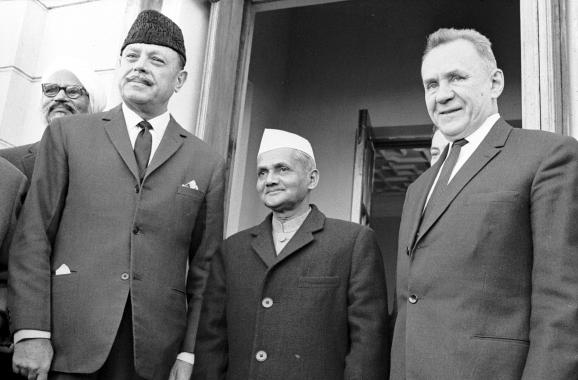
Southeast Asia Treaty Organization (SEATO), regional-defense organization from 1955 to 1977, created by the Southeast Asia Collective Defence Treaty, signed at Manila on September 8, 1954, by representatives of Australia, France, New Zealand, Pakistan, the Philippines, Thailand, the United Kingdom, and the United States. The treaty came into force on February 19, 1955. Pakistan withdrew in 1968, and France suspended financial support in 1975. The organization held its final exercise on February 20, 1976, and formally ended on June 30, 1977.
https://www.britannica.com/topic/Southeast-Asia-Treaty-Organization
Indus Waters Treaty 1960 – सिंधू नदीच्या पाणी वाटपाचा करार १९६०
Done at Lahore on 21st February 1999 in the presence of Prime Minister of India, Mr. Atal Behari Vajpayee, and Prime Minister of Pakistan, Mr. Muhammad Nawaz Sharif.
(K. Raghunath)
https://mea.gov.in/in-focus-article.htm?18997/Lahore+Declaration+February+1999
Foreign Secretary of the Republic of India
(Shamshad Ahmad)
Foreign Secretary of the Islamic Republic of Pakistan
काश्मीर प्रश्न

“Facts that Led to the Creation of Pakistan Occupied Kashmir (West ….” https://www.spslandforces.com/story/?id=691&h=Facts-that-Led-to-the-Creation-of-Pakistan-Occupied-Kashmir-West-of-LOC-and-China-Occupied-Kashmir-East-of-LAC. Accessed 14 Apr. 2022.
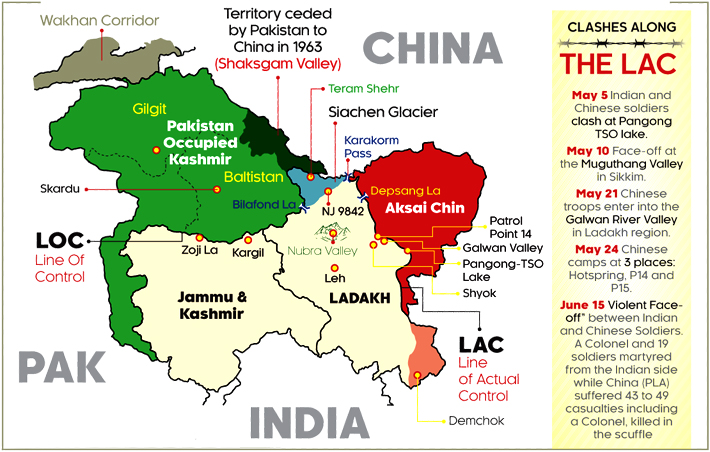
भारत स्वतंत्र झाला त्याचवेळी भारताची हिंदू आणि मुस्लिम धर्माच्या आधारावर फाळणी झाली. भारत आणि पाकिस्तान अशी दोन राष्ट्रे निर्माण झाली. स्वातंत्र्य मिळण्यापूर्वी संस्थानिकांचा भारत आणि ब्रिटीश भारत असेही भारताचे दोन भाग होते.
१९५३ मध्ये भारतीय पंतप्रधान पंडित नेहरू यांनी काश्मीर मध्ये सार्वमत घेण्याचा दिलेला प्रस्ताव पाकिस्तानचे पंतप्रधान मोहम्मद आली बोग्रा यांनी अमान्य केला.
१९७२ मध्ये झालेल्या सिमला करारामध्ये काश्मीर प्रश्न भारत पाकिस्तान दोघांनीच सोडवायचा आहे हे मान्य करण्यात आले.
१९७९ साली पाकिस्तानला अमेरिकेकडून एफ-१६ विमाने मिळाली.
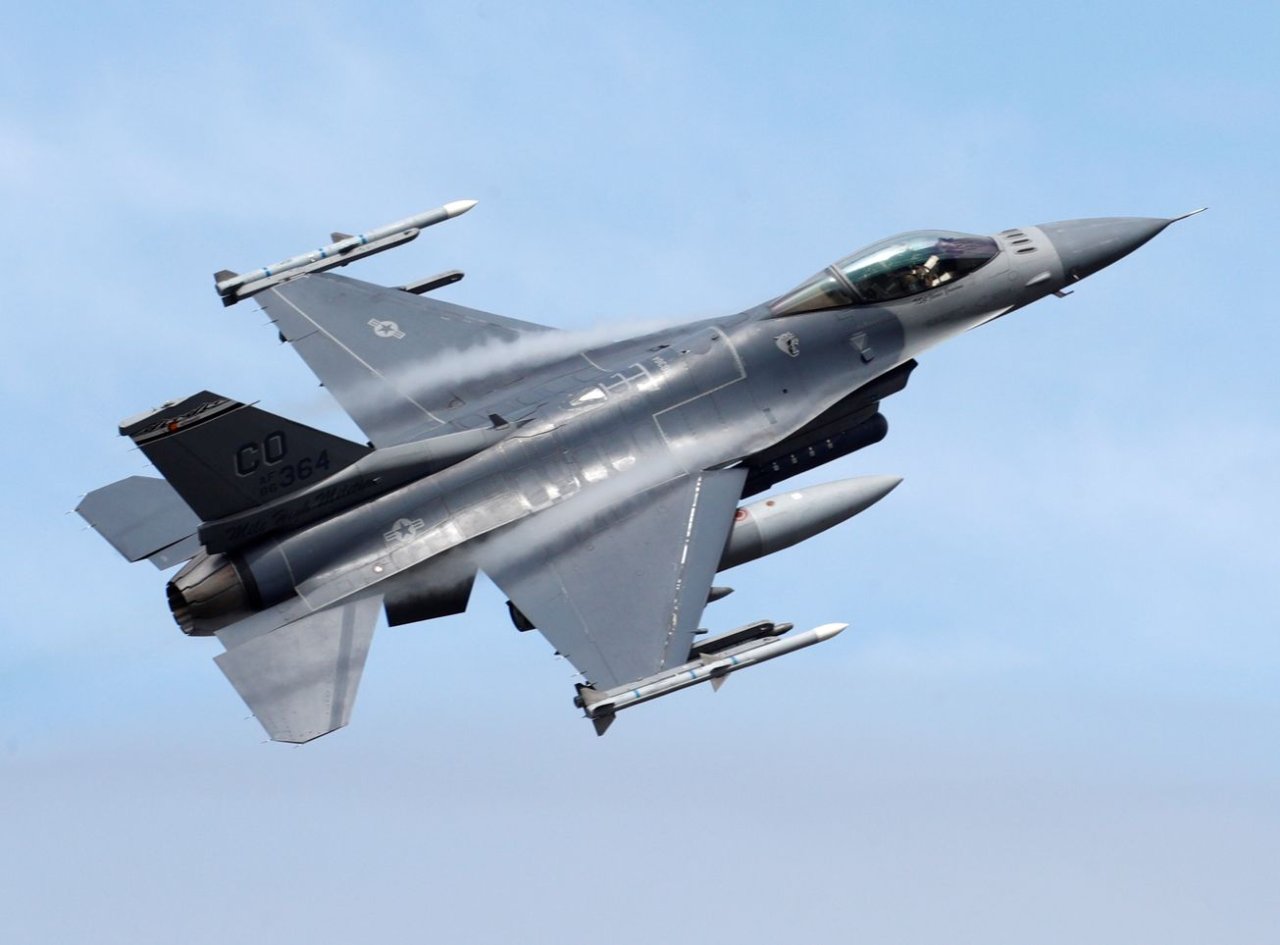
भारत आणि पाकिस्तान मध्ये अण्वस्त्र स्पर्धा आहे. १९७४ मध्ये पहिल्यांदा भारताने पोखरणमध्ये अणुचाचणी घेतली. पोखरण-II या नावाने ओळखल्या जाणाऱ्या अणुचाचण्या १९९८ मध्ये अटल बिहारी वाजपेयी पंतप्रधान असताना घेण्यात आल्या. त्याचवर्षी भारत अण्वस्त्रधारी झाला. त्याचवर्षी पाकिस्तानने अणुचाचणी घडवून आणली आणि तोही अण्वस्त्राधारी देशांच्या यादीत सामील झाला.
२००१ मध्ये आग्रा येथे भारत आणि पाकिस्तानची शिखर बैठक झाली. त्यावेळचे भारताचे पंतप्रधान अटल बिहारी बाजपेयी आणि पाकिस्तानचे त्यावेळचे अध्यक्ष जनरल परवेझ मुशर्रफ हे या बैठकीमध्ये सामील झाले होते. त्यामध्ये काश्मीर प्रश्न सिमला कराराच्या आधारावर सोडवला जावा, म्हणजेच कोणाचीही मध्यस्थी न स्वीकारता केवळ भारत आणि पाकिस्तान या दोन देशांनीच एकत्र येऊन तो प्रश्न सोडवावा या मुद्द्यावर एकमत झाले. सिमला करार १९७२ मध्ये झुल्फिकार अली भुट्टो आणि पंतप्रधान इंदिरा गांधी यांच्या मध्ये झाला होता.
भारत बांग्लादेश संबंध
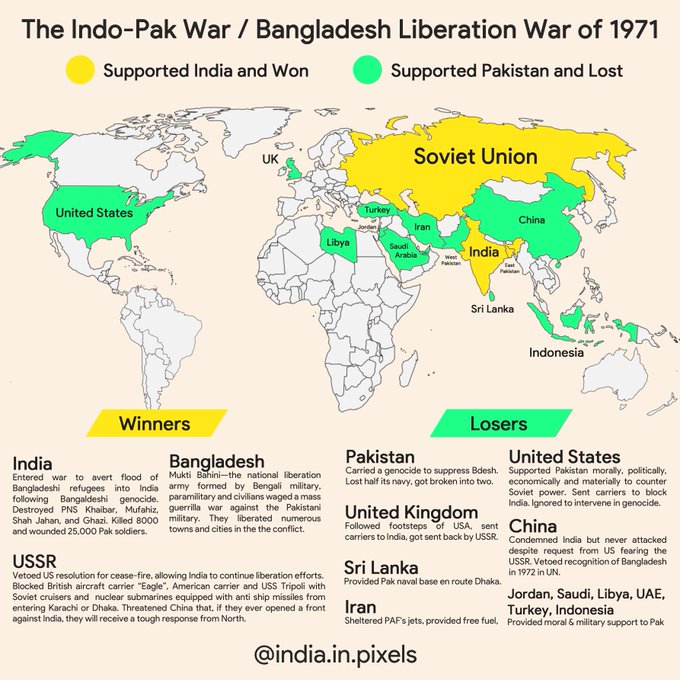
During the 1971 War, as the Indian Army launched its blitzkrieg into East Pakistan (1947 to 1971) – present day Bangladesh – US President Richard Nixon had a terrible idea. Under the pretext of evacuating American citizens from the warzone, Nixon ordered the US Seventh Fleet’s Task Force 74, led by the nuclear powered aircraft carrier Enterprise, to proceed towards the Bay of Bengal. He was spurred on by Henry Kissinger, his National Security Advisor. Nixon’s rash move – which became America’s greatest PR disaster in India – was dictated by the condition of the Pakistani military, which was taking a hammering in East Pakistan. More than 100,000 Pakistani soldiers were trapped between the Bay of Bengal and the rampaging Indian Army. Of these 97,000 would soon surrender, making it the largest capitulation since World War II.
https://swarajyamag.com/world/december-1971-when-the-us-sent-its-naval-ships-into-bay-of-bengal-and-ussr-responded
भारताने बांग्लादेशच्या निर्मीतीमध्ये मोठे योगदान दिले आहे. १९७१ मधील युद्धानंतर बांग्लादेशची निर्मीती झाली. तेव्हापासून काही किरकोळ मुद्दे सोडले तर पाकिस्तानपेक्षा भारत बांग्लादेश संबंध अधिक चांगले विकसित झाले आहेत. दोन्ही देशांमध्ये सीमावाद आहे. २०१५ साली झालेल्या करारनुसार १६२ प्रदेशांचे – चीट महालांचे अदान प्रदान करण्याचे ठरले.
भारत बांग्लादेश मैत्री करार – १९७२ – पंचवीस वर्षांचा करार
१९ मार्च १९७२ रोजी पंचवीस वर्षांचा भारत बांग्लादेश मैत्री आणि सहकार्याचा करार करण्यात आला. या कराराला इंदिरा- मुजीब करार असेही म्हणतात. मुजीब म्हणजे शेख मुजीबूर रहमान – ते बांग्लादेशचे पहिले पंतप्रधान होते आणि आवामी लीग या राजकीय पक्षाचे संस्थापक सदस्य होते.
Article 11
The present Treaty is signed for a term of twenty five years and shall be subject to renewal by mutual agreement of the high Contracting Parties.
The Treaty shall come into force with immediate effect from the date of its signature.
“Treaty of Peace and Friendship – Ministry of External Affairs.” https://www.mea.gov.in/bilateral-documents.htm?dtl/5621/Treaty+of+Peace+and+Friendship. Accessed 14 Apr. 2022.

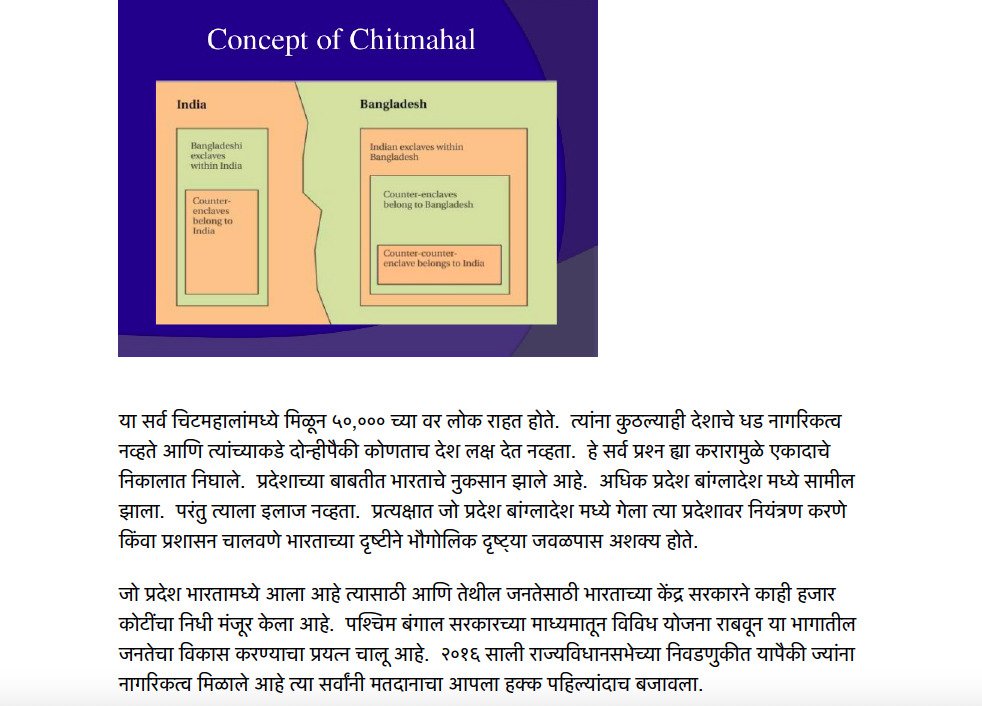
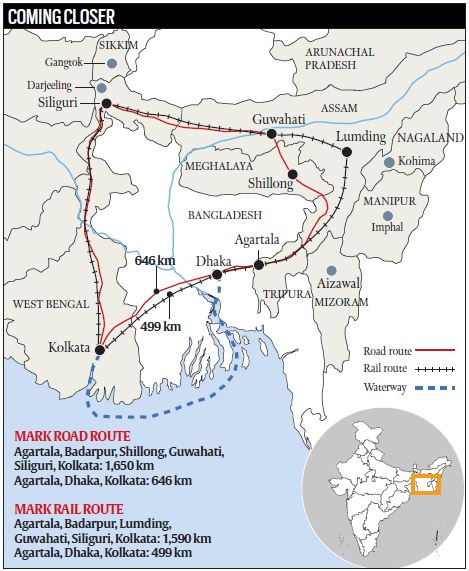
सार्क (SAARC – South Asian Association for Regional Cooperation)
८ डिसेंबर १९८५ रोजी बांग्लादेशची राजधानी ढाका येथे स्थापन झालेल्या सार्कचे सध्या आठ सदस्य देश आहेत. भारत, पाकिस्तान, बांग्लादेश, श्रीलंका, भूतान, मालदीव, नेपाळ हे संस्थापक सात देश आणि नंतर २००७ साली सामील झालेला अफगाणिस्तान. सार्कचे मुख्यालय (headquarters) नेपाळची राजधानी काठमांडू येथे आहे.
आसियान
8 ऑगस्ट 1967 ला थायलंडची राजधानी बँकॉक येथे आसियानची स्थापना झाली. त्याचदिवशी इंडोनेशिया, मलेशिया, फिलिपाईन्स, सिंगापूर आणि थायलंड या पाच संस्थापक सदस्यांनी आसियान जाहीरनाम्यावर (किंवा ज्याला बँकॉक जाहीरनामा म्हणतात)सह्या केल्या. सध्या आसियानचे १० सदस्य आहेत. व्हिएटनाम, ब्रुनेई, लाओस, कंबोडिया, म्यानमार (ब्रह्मदेश) कालांतराने आसियानमध्ये सामील झाले. यापैकी काही प्रगत अर्थव्यवस्थांना पुढे Asian tigres हे नाव पडले. आसियानचा नकाशा. पहिली आसियान शिखर परिषद इंडोनेशियातील बाली मध्ये झाली. आज आसियानचे मुख्यालय इंडोनेशियाची राजधानी जकार्ता मध्ये आहे.
भारताचे पुर्वेकडे पहा धोरण Look East Policy १९९१ मध्ये नरसिंह राव सरकारने सुरु केले. आसियान देशांशी म्हणजेच दक्षिण पूर्व किंवा अग्नेय आशियाई देशांशी सहकार्य वाढवणे हा त्यामागचा एक हेतू होता. जपान, दक्षिण कोरीया यांच्यासारख्या आपल्या आर्थिक बळावर पुढे आलेल्या पूर्वेकडील विकसित देशांशी संबंध वाढवणे हाही त्यामगचा हेतू होता.
मोदी सरकारने २०१४ साली घोषित केलेली Act East policy हा look east धोरणाचा पुढचा टप्पा आहे. त्याचा मुख्य भर आर्थिक आणि सुरक्षा विषयक विकासाकडे आहे.
भारत आसियानचा सदस्य नसला तरी भारताचे आसियानबरोबर जवळचे संबंध आहेत. पहिली भारत आसियान शिखर परिषद नोव्हेंबर २००२ मध्ये कंबोडीया मधील नॉम पेन या ठिकाणी झाली. भारताचे त्यावेळचे पंतप्रधान अटल बिहारी वाजपेयी या परिषदेला उपस्थित होते.
India’s relationship with ASEAN is a key pillar of our foreign policy and the foundation of our Act East Policy. The up-gradation of the relationship into a Strategic Partnership in 2012 was a natural progression to the ground covered since India became a Sectoral Partner of the ASEAN in 1992, Dialogue Partner in 1996 and Summit Level Partner (शिखर पातळीवरील सहयोगी) in 2002. There are, in total, 30 Dialogue Mechanisms between India and ASEAN, cutting across various sectors.
https://mea.gov.in/aseanindia/20-years.htm
भारत आणि संयुक्त राष्ट्रे


The people of Ukraine cannot bear the violence being inflicted on them. And the most vulnerable people around the globe cannot become collateral damage in yet another disaster for which they bear no responsibility. We need to silence the guns and accelerate negotiations towards peace, now. For the people of Ukraine. For the people of the region. — ANTÓNIO GUTERRES
https://www.un.org/sg/en
António Guterres, in full António Manuel de Oliveira Guterres, (born April 30, 1949, Lisbon, Portugal), Portuguese politician and diplomat who served as prime minister of Portugal (1995–2002) and secretary-general of the United Nations (2017– ).
Guterres studied physics and engineering at the Universidade de Lisboa’s elite Instituto Superior Técnico, earning a degree in 1971. His time as a student was marked by the decline of the dictatorship of António de Oliveira Salazar, and Guterres was active in the protest movement that helped to topple Salazar’s successor, Marcello Caetano, in 1974. After graduating, Guterres worked as a physics instructor, but, as Portugal began its transition to democracy, he became more active in politics. He joined the Socialist Party in 1974, and two years later he was elected to the Portuguese parliament. Over the next two decades, he served on a variety of parliamentary committees, and, from 1981 to 1983, he was a member of the Parliamentary Assembly of the Council of Europe.
https://www.britannica.com/biography/Antonio-Guterres
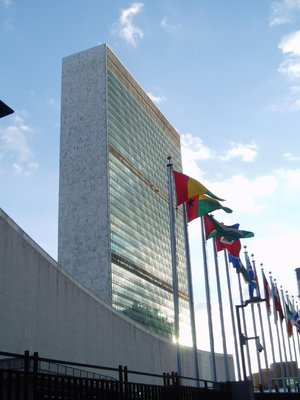
संयुक्त राष्ट्रांची स्थापना १९४५ मध्ये झाली. आज या संघटनेचे १९३ सदस्य आहेत.
The Declaration by United Nations contained the first official use of the term ‘United Nations’. The name ‘United Nations’ was coined by United States President Franklin D. Roosevelt.
https://www.un.org/en/about-us/history-of-the-un/preparatory-years
The current term of the Secretary-General is five years, with a possibility to be re-appointed for a second five year term. In accordance with Article 97 of the Charter, the appointment is made by the General Assembly, upon the recommendation of the Security Council.
“Secretary-General – UN Secretariat Documentation.” 21 Mar. 2022, https://research.un.org/en/docs/secretariat/sg. Accessed 14 Apr. 2022.
UN General Assembly on Friday appointed Antonio Guterres as the UN Secretary-General for a second term beginning January 1, 2022, days after the powerful Security Council had unanimously recommended his name to the 193-member body for re-election.
President of the 75th session of the UN General Assembly Volkan Bozkir announced that Mr. Guterres “has been appointed by acclamation Secretary-General of the United Nations for the second term of office beginning on January 1, 2022 and ending on December 31, 2026.” Mr. Bozkir then administered the oath of office to 72-year-old Guterres at the podium of the UN General Assembly hall.
https://www.thehindu.com/news/international/antonio-guterres-re-elected-as-un-secretary-general-for-second-five-year-term/article34851570.ece
भारत संयुक्त राष्ट्रांच्या संस्थापक देशांपैकी एक आहे. १९४५ मध्येच आपण संयुक्त राष्ट्रांच्या सनदेला मान्यता दिली. दरवर्षी २४ ऑक्टोबर या दिवशी संयुक्त राष्ट्र दिवस साजरा केला जातो. २०१५ पासून भारत सरकारच्या विनंतीवरून संयुक्त राष्ट्रांतर्फे २१ जून हा जागतिक योग दिवस म्हणून साजरा केला जातो.
भारताने संयुक्त राष्ट्रांच्या शांतता रक्षक दलांमध्ये सर्वात मोठे योगदान दिले आहे.
संयुक्त राष्ट्रांची सर्वात महत्त्वाची संस्था म्हणजे सुरक्षा परिषद. या परिषदेचे पाच कायम सदस्य आहेत. अमेरिका (USA), इंग्लंड (UK), फ्रान्स, रशिया आणि चीन हे ते पाच देश आहेत. सुरक्षा परिषदेचे कायम सदस्यत्व मिळवण्यासाठी भारत, जर्मनी, जपान यासारखे इतर काही देशही प्रयत्न करीत आहेत. कायम सदस्य नसला तरी युरोपच्या राजकारणात जर्मनीचा प्रभाव खूप आहे.
१० अस्थायी सदस्यांची दोन वर्षांच्या कालावधीसाठी आमसभेकडून निवड होते.
The first world conference on the environment – Stockholm
The 1972 United Nations Conference on the Environment in Stockholm was the first world conference to make the environment a major issue. The participants adopted a series of principles for sound management of the environment including the Stockholm Declaration and Action Plan for the Human Environment and several resolutions.
https://www.un.org/en/conferences/environment/stockholm1972
![]()
